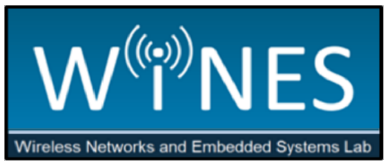Education
- Ph.D. in Computer Engineering (current) - Northeastern University, Boston, MA, USA
- B.Sc. in Electrical Engineering (2023) - Sharif University of Technology, Tehran, Iran
Research Interests
- 5G and beyond cellular networks
- O-RAN
- Network automation
- Energy analysis and optimization in O-RAN
Ravis is a PhD Candidate at the Institute for the Wireless Internet of Things at Northeastern University under Prof. Tommaso Melodia. She received her B.Sc. in Electrical Engineering with minor concentration on communication systems from Sharif University of Technology in Spring 2023. Her research focuses on Open Radio Access Networks in next-generation cellular networks, mainly on network automation and automated testing. She also works on power consumption across O-RAN components and exploring optimization approaches for network energy efficiency.
Publications
2025
Journals and Magazines
Modern cellular networks, characterized by heterogeneous deployments, diverse requirements, and mission-critical reliability needs, face significant complexity in end-to-end management. This challenge is exacerbated in private 5G systems, where enterprise Information Technology (IT) teams struggle with costly, inflexible deployment and operational workflows. While software-driven cellular architectures introduce flexibility, they lack robust automation frameworks comparable to cloud-native ecosystems, impeding efficient configuration, scalability, and vendor integration. This paper presents AutoRAN, an automated, intent-driven framework for zero-touch provisioning of open, programmable cellular networks. Leveraging cloud-native principles, AutoRAN employs virtualization, declarative infrastructure-as-code templates, and disaggregated micro-services to abstract physical resources and protocol stacks. Its orchestration engine integrates Language Models (LLMs) to translate high-level intents into machine-readable configurations, enabling closed-loop control via telemetry-driven observability. Implemented on a multi-architecture OpenShift cluster with heterogeneous compute (x86/ARM CPUs, NVIDIA GPUs) and multi-vendor Radio Access Network (RAN) hardware (Foxconn, NI), AutoRAN automates deployment of O-RAN-compliant stacks-including OpenAirInterface, NVIDIA ARC RAN, Open5GS core, and O-RAN Software Community (OSC) RIC components-using CI/CD pipelines. Experimental results demonstrate that AutoRAN is capable of deploying an end-to-end Private 5G network in less than 60 seconds with 1.6 Gbps throughput, validating its ability to streamline configuration, accelerate testing, and reduce manual intervention with similar performance than non cloud-based implementations. With its novel LLM-assisted intent translation mechanism, and performance-optimized automation workflow for multi-vendor environments, AutoRAN has the potential of advancing the robustness of next-generation cellular supply chains through reproducible, intent-based provisioning across public and private deployments.
Link2024
Conference Papers
While the availability of large datasets has been instrumental to advance fields like computer vision and natural language processing, this has not been the case in mobile networking. Indeed, mobile traffic data is often unavailable due to privacy or regulatory concerns. This problem becomes especially relevant in Open Radio Access Network (RAN), where artificial intelligence can potentially drive optimization and control of the RAN, but still lags behind due to the lack of training datasets. While substantial work has focused on developing testbeds that can accurately reflect production environments, the same level of effort has not been put into twinning the traffic that traverse such networks.To fill this gap, in this paper, we design a methodology to twin real-world cellular traffic traces in experimental Open RAN testbeds. We demonstrate our approach on the Colosseum Open RAN digital twin, and publicly release a large dataset (more than 500 hours and 450 GB) with PHY-, MAC-, and App-layer Key Performance Measurements (KPMs), and protocol stack logs. Our analysis shows that our dataset can be used to develop and evaluate a number of Open RAN use cases, including those with strict latency requirements.
Link
